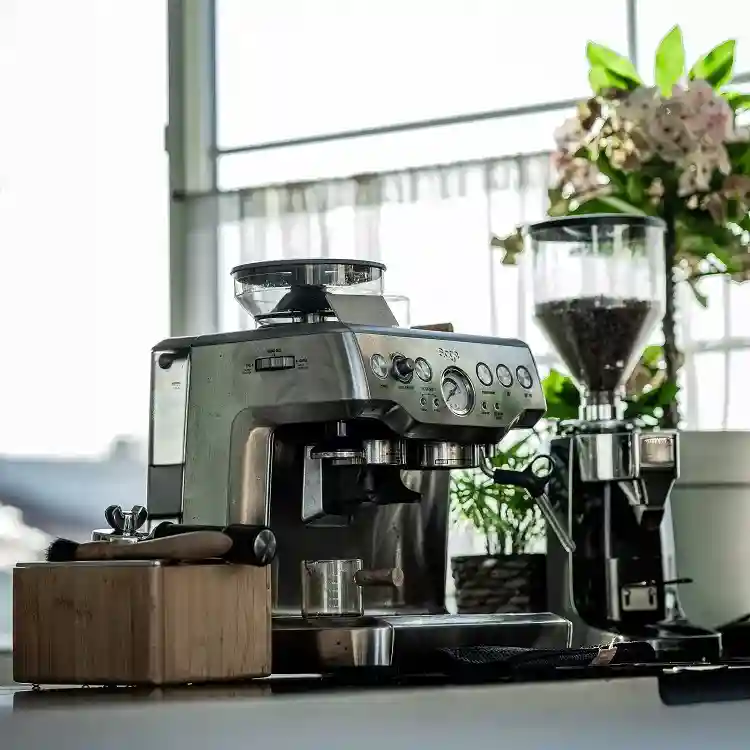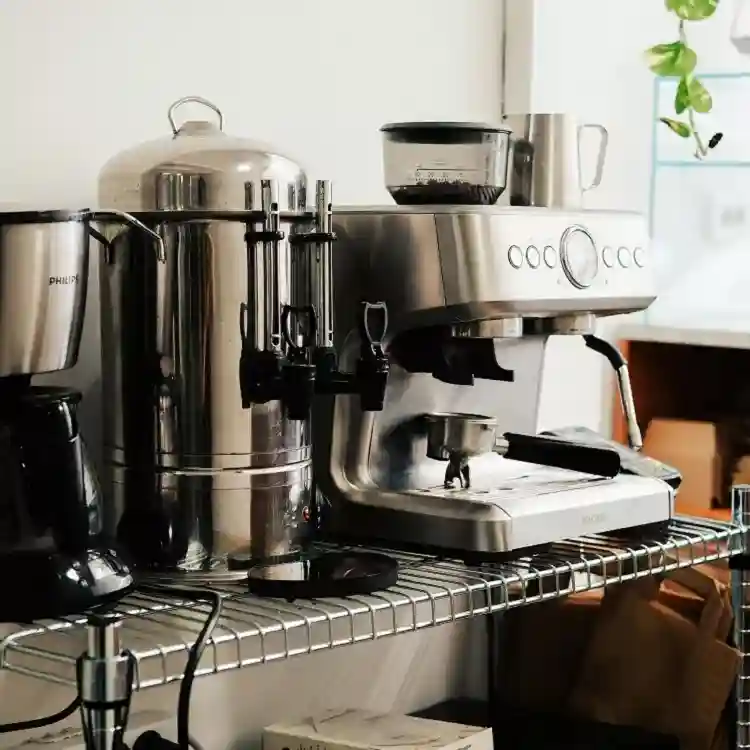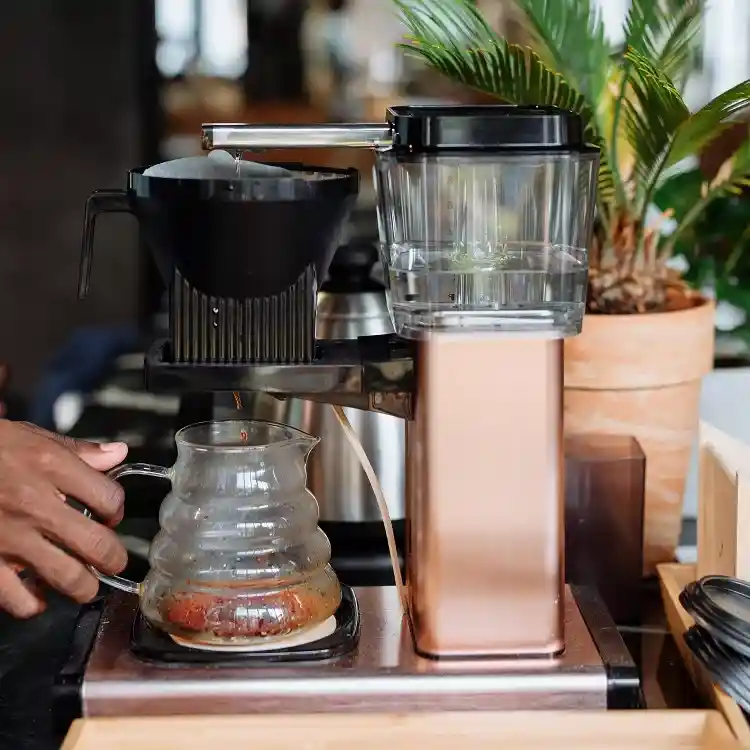In today’s world, coffee machines have become an important appliance, both at home and in commercial activities. They are especially relevant for owners of coffee shops, offices, and hotel and restaurant businesses, for whom high-quality coffee is part of the service. That is why a professional coffee machine must work without failures and ensure consistent quality of drinks. Malfunctions of such devices lead to work stoppages, loss of customers, and additional costs. Let’s take a look at the most common malfunctions, their main causes, symptoms, possible breakdowns, and methods of repair.
1. The appliance does not turn on
This is one of the most unpleasant malfunctions. The device does not respond to pressing the power button, the screen does not light up. Often, the cause is a banal damage to the power cable or a faulty outlet. In some cases, the fault lies with the electronics: a burnt-out circuit board or a broken power supply. Also, sometimes a safety lock is triggered after a power surge. To determine the cause, start with the simplest thing: check the cable, plug it into a different outlet, try restarting the machine. If nothing helps, there is probably a breakdown inside the unit, and a call to a technician is mandatory.
2. Problems with water heating
The quality of espresso depends on the temperature of the water. Every barista knows this. If the coffee machine does not heat the water to 90-96°C, the coffee may be sour or not rich enough. Potentially, this problem is caused by a malfunction of the heater, boiler, or temperature sensor. Sometimes the temperature exceeds the normal range, which is also dangerous, as the unit can overheat, start producing steam instead of water, or simply turn off. Professional models usually have a thermal fuse that turns off the system automatically when it overheats.

3. Water supply system malfunctions
If water does not come out of the tap or the cooking process does not start, check the water in the reservoir, the pump and the presence of scale in the tubes. Clogging is a common cause, especially when using unfiltered water. The water in the device may not reach the boiler, or the pump may not create the proper pressure. The problem is often solved by replacing the filters and flushing the channels. If the steam supply is also disrupted, a general failure of the hydraulic system is likely.
4. 4. Water leakage
When a puddle appears under the coffee machine, it is important to quickly find out what caused it. Often, it’s a worn-out seal under the holder or a defective drainage system. In some cases, the water tank or water supply pipe is leaking. Sometimes the coffee machine does not function properly due to an overflowing grounds container or drainage, and water leaks out. To fix such a breakdown, an inspection with disassembly of the body is required. This is especially true for coffee machines that are used intensively throughout the day.
5. Problems with the steam system
If a professional coffee machine fails to produce steam, the source of the failure may be low pressure, a dirty nozzle, or a malfunctioning steam generator. Check if the steam outlet is clogged. Sometimes hot water comes out instead of steam. This indicates a faulty valve. In a coffee machine with a milk frother, this can seriously affect the preparation of cappuccino or latte.

6. Churning milk
Users often complain that their coffee machine does not froth milk or that the foam is unstable. This can be caused by the following factors: contamination of the steam hose, clogging of the frother, incorrect position of the tube. The type of milk also matters: you should use fresh milk of medium fat content. In professional units, automatic frothing systems often require regular cleaning, otherwise malfunctions can manifest themselves in the form of noise, splashing, and lack of foam.
7. Problems with coffee quality
If the coffee is too thin, sour, or bitter, look for a malfunction in the grind settings, pressure, and amount of coffee per serving. Too coarse grinding leads to poor extraction, and fine grinding leads to bitterness. The quality is also affected by dirty filters, portafilter, and coffee that has been stored for too long or improperly. For bean-to-barrel coffee machines, it is important to clean the brewing unit regularly.
8. The coffee grinder does not work
If a coffee grinder does not grind beans, it is most often due to clogged grinders, a foreign object, or wear and tear on the mechanism. In some cases, the device simply does not recognize the presence of beans due to a sensor error. If the grinders are broken, the coffee will be served unevenly, which will lead to an unstable taste.
9. Indicators and sensors
If the display keeps showing errors even though the machine is working, check the sensors. For example, the grounds container light does not go out even though the tank is empty. Or the machine does not recognize the water level in the tank. This often happens due to moisture, dirt, and contact wear. In professional models, sophisticated electronics require accurate diagnostics.
10. Clogging and cleaning
Scale, coffee oils, and milk residue clog the system and cause the machine to break down. To prevent this, you need to clean it regularly:
- Decalcification of the boiler.
- Flushing the hydraulic system.
- Clean the filters and the frother.
Ignoring such procedures is the main reason for the decrease in the productivity of the coffee machine.
Prevention
To reduce the risk of malfunctions in your coffee machines, follow these simple rules:
- Use filtered water.
- Clean the parts that come into contact with milk and coffee daily.
- Once every 3-6 months, perform a deep cleaning and check of the hydraulic system.
- Professional service is required once a year.
When to contact specialists
Not all malfunctions can be fixed by yourself. If your coffee machine does not turn on, leaks, or displays errors, contact a professional. To repair a professional coffee machine, choose a service that has access to original spare parts and experience with the model in question.
Conclusions.
Most malfunctions are caused by neglect, poor maintenance, poor quality water, or incorrect settings. Regular maintenance, cleaning, and proper use of the coffee machine significantly reduce the number of breakdowns. Responding to symptoms in a timely manner and contacting a professional is the best investment in the quality of your coffee.






